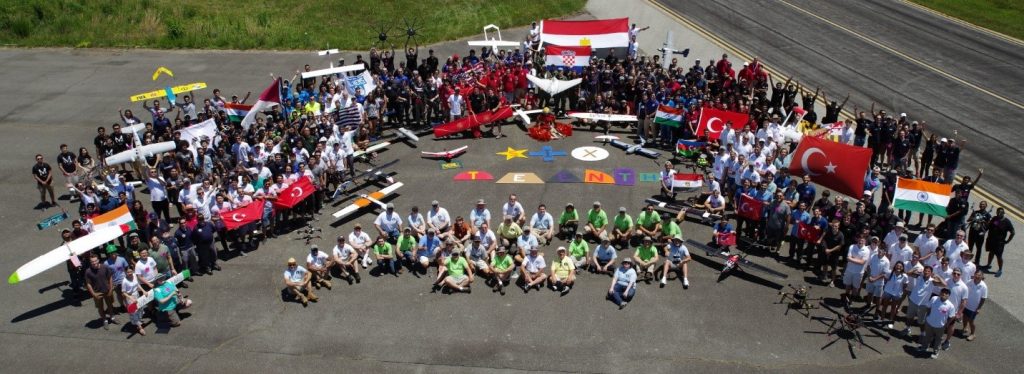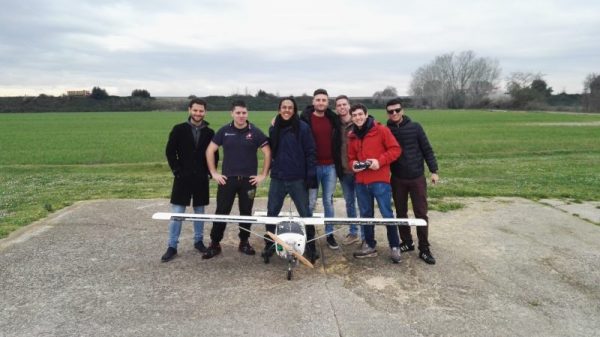“Courses Taught Me Theory, Competitions Made Me an Engineer” (P. Tischler)
Connell D’Souza is back and shares some learnings from the SUAS competition.
—
We have just been through a great competition summer where I met some very fascinating people from different nationalities, backgrounds and focus areas! One of the many people I met this summer was Phillip Tischler at AUVSI’s Student Unmanned Aerial Systems (SUAS) Competition at the Naval Air Station Pax River, Maryland and we had a long conversation about the state of SUAS, other aerospace competitions and his experiences. Phill is a Senior Software Engineer at Google and volunteers a good amount of his time to help grow SUAS. Prior to joining Google, Phill wore a few different hats at CUAir, one of the oldest and most successful teams at the competition. So, with this unique perspective of being a competitor and now in an organizational role, I was thrilled when Phill allowed me to share some excerpts from our conversation!
What is SUAS?
Phill says, “Drones have become ubiquitous: they are used in aerial photography, shipping and delivery, search and rescue, infrastructure inspection, and even in racing for entertainment. Autonomous drones fly without a pilot and perform complex tasks with the use of sensors and actuators.”
The AUVSI Student Unmanned Aerial Systems (SUAS) Competition engages students to build an autonomous drone, or unmanned aerial system (UAS), to accomplish a challenging mission. The competition requires students to design, integrate, report on, and demonstrate a UAS capable of autonomous flight and navigation, remote sensing via onboard payload sensors, and execution of a specific set of tasks. Exciting new tasks include dynamic avoidance of obstacles and delivering packages to a location, all without the help of a human. The competition has been held annually since 2002. Each year 60+ international collegiate teams compete in SUAS. In 2018, over $70,000 in prize money was awarded to 69 teams: 35 U.S. colleges, 31 international colleges, and 3 high schools”
“… courses taught me theory, competitions made me an engineer …” (Phillip Tischler)
Phill considers his time at CUAir taking part in SUAS instrumental in his success as a Technical Lead at Google. He says, “The competition provides a unique student education. It teaches students to develop while on large (5 to 50+ student) interdisciplinary teams, which is an extreme test of teamwork and leadership. It teaches students to develop over the course of a year, and to iterate on that design over multiple years. It evaluates students on real-world tasks, both in design and performance. This teaches students skills unobtainable in classwork alone. This education has proven extremely valuable to employers.”
MathWorks provides teams with comprehensive licenses of MATLAB and Simulink and training content that enables teams to follow workflows used by our customers in various domains. MATLAB and Simulink are very popular tools in the aerospace industry and exposure to these tools enables an easier transition into industry once they graduate. We see a lot of MATLAB usage at SUAS — for example, CUAir uses MATLAB to optimize the size of their airframe. They use the Global Optimization Toolbox and MATLAB’s genetic algorithm to set up an optimization problem that varies 4 parameters viz. wing planform area, center of gravity, tail moment arm, and tail angle of attack to compute the most optimal size based on their design goals. Watch the video below to learn more.
Another use case that I thought was impressive was by a first-time team in 2018, the Sapienza Flight Team (SFT). They used MathWorks tools and Model-Based Design to prototype, simulate, test, and deploy their own autopilot. They have a plant, environment and sensor model, an autopilot designed in Simulink and they run Software-in-the-loop (SIL) simulations before deploying the models to perform Hardware-in-the-loop (HIL) simulations in real-time. The plant, sensor and environment models are deployed to a dSpace Real-Time Machine, and the autopilot to their on-board computer which is made up of a Raspberry-Pi and Arduino Due connected to each other via a serial port. Their technical design report gives a brief overview of their work. Why is this impressive, you ask? Look at the number of MathWorks’ customers in the Aerospace Industry that employ Model-Based Design to develop some of the coolest technology around! SFT’s students are primed to go into industry and start helping the teams they join right out the gate! SFT has promised to write a blog post on this so stay tuned for more!
At the 2018 competition, several students I met were interviewed and offered internships, co-ops and even fulltime opportunities at Aerospace companies due, in no small measure, to an early exposure to the latest and greatest tools and technology out there.
Phill summarized the benefits of taking part in SUAS as, “I would say I learned 3 major things on the CUAir team that I didn’t learn in classes:
- Leadership: As a team lead and sub-team lead, I had to handle tasks like hiring and training new members, scoping and managing projects without being directly involved in implementation, and motivating others beyond personal incentives.
- Realistic Development: Unlike a semester long class, I had to develop a project over a year and then iterate on that design for the following 3 years
- Cross Functional Teamwork: Classes typically have group projects of ~3 people; CUAir was a 40+ person team. The CUAir team leveraged many disciplines to develop an autonomous air vehicle: software, mechanical, aerospace, electrical, business, etc. I learned to collaborate with people in fields I had no experience in, and to make design trade-offs that spanned multiple disciplines.
Classes constrain the problem and the solution to learn the course’s material. The AUVSI SUAS competition only defines goals, the problems and solutions are unconstrained. Courses taught me the theory, the CUAir team made me an engineer. Companies certainly recognize the value of the teams. For example, my team had dedicated recruitment sessions between many companies (sponsors) and the team members. That being said, I would say the greater value was the education. The things I learned on the team helped me become and succeed as a Technical Lead at Google.”
Do you have similar feelings towards student competitions? Write to us at studentcompetitions@mathworks.com and we would love to hear your story!
P.S.:
Philllip Tischler is a Senior Software Engineer (SWE) & Site Reliability Engineer (SRE) at Google, working on Search & Indexing, Aggregation and Access Control Lists. He has been a design judge and over the last couple of years developed and supports the interoperability system which allows judges to communicate with the teams vehicles and grade their performance. His focus these days is on scaling up the competition to ensure they are not turning away new teams wishing to take part and with key people in the organization committee retiring, keeping the competition running for many more years to come.
- Category:
- Skills,
- Team achievements,
- Video











Comments
To leave a comment, please click here to sign in to your MathWorks Account or create a new one.